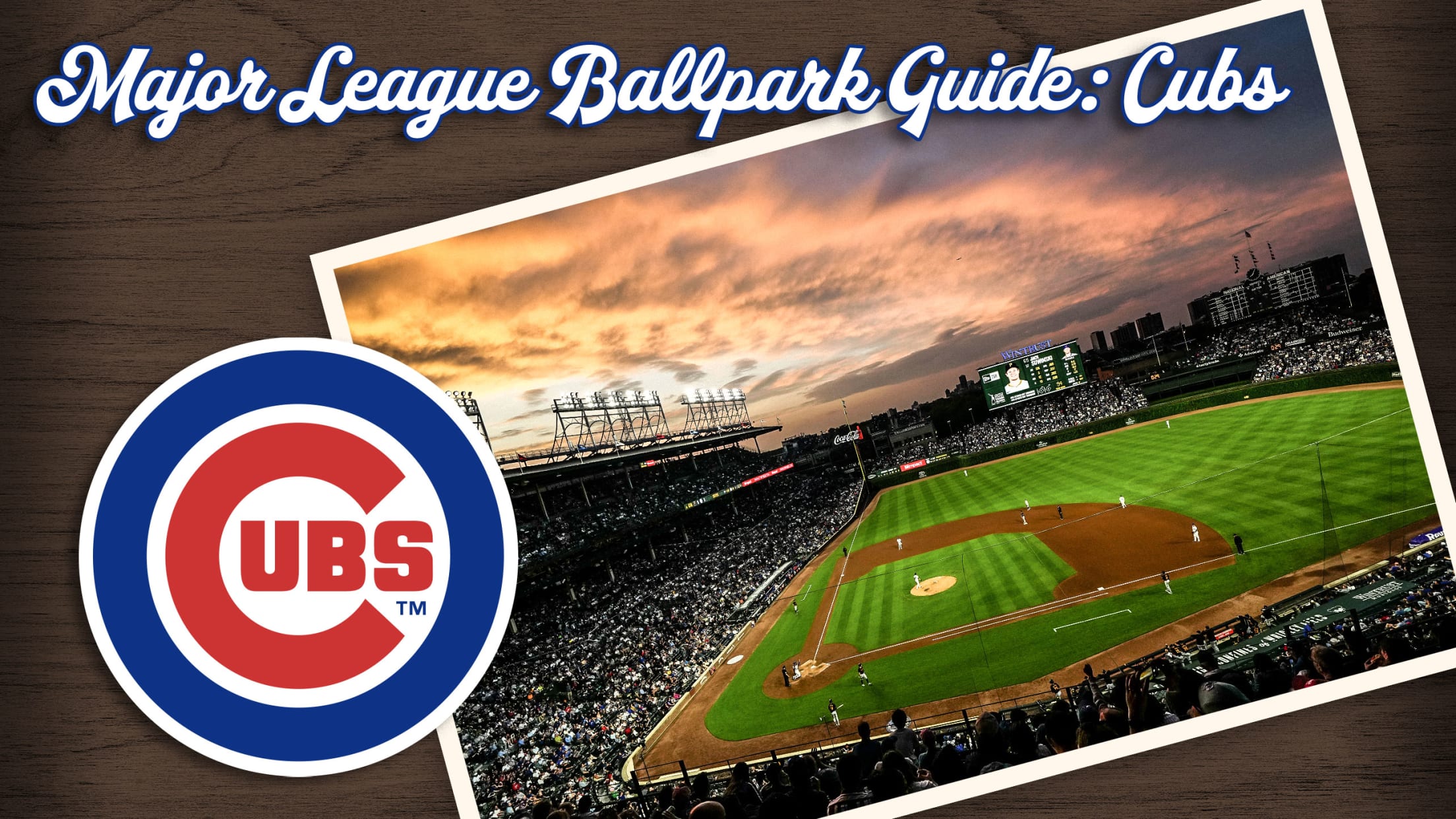
Explore Wrigley Field, home of the Chicago Cubs

Welcome to Wrigley Field, a federal landmark and affectionately referred to as the Friendly Confines for its traditional elements and neighborhood feel. Settle into a bleacher seat for a Friday afternoon game at 1:20 p.m., and enjoy one of baseball’s beloved ballparks.
Chicago Cubs
Established: 1876
National League Central
Ballpark: Wrigley Field (opened 1914)
The old ballpark known now as Wrigley Field was built in 1914, but did not become the home of the Cubs until two years later. Originally, the stadium was built on the grounds of a seminary under the ownership of Charles H. Weeghman. The Chicago Whales of the Federal League called Weeghman Park home for two years until the league folded and Weeghman needed a new tenant.
Weeghman bought the Chicago Cubs of the National League -- a club that had been operating since 1876 and won multiple World Series -- and moved them out of the West Side Grounds and into his new ballpark. The Cubs beat the Reds, 7-6, in 11 innings in the first NL game at the site on April 20, 1916. The home of the Cubs later became Wrigley Field in 1926 under William Wrigley Jr.’s ownership.
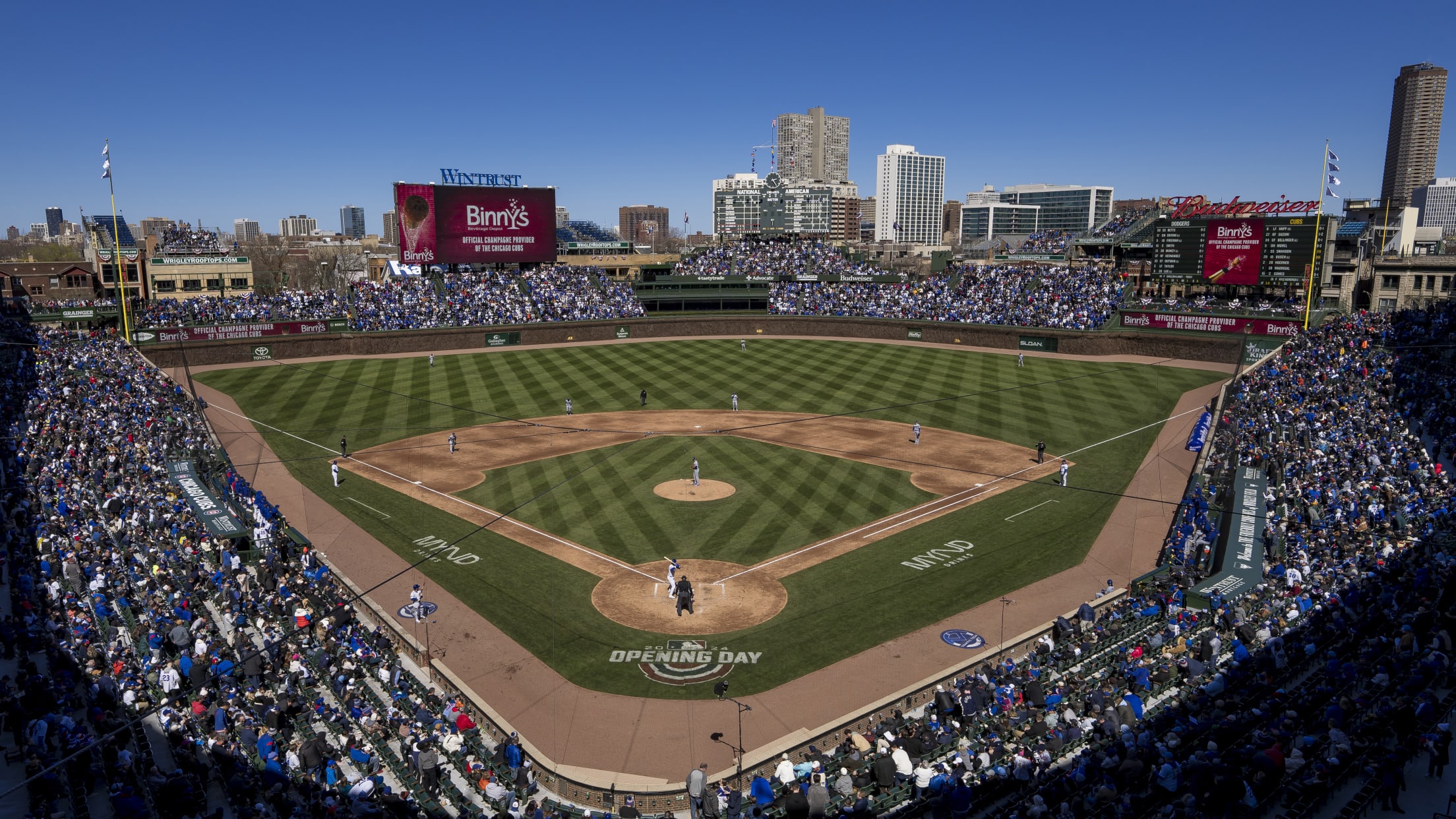
Wrigley Field
Wrigley Field location (via Google Maps)
Cubs' schedule
Cubs' roster
1060 W. Addison St.
Chicago, Ill., 60613
Capacity: 41,649 (originally 14,000)
Dimensions: left field, 355 feet; center field, 400 feet; right field, 353 feet
Park factors (2024)
100 = league average
Runs: 94 | Homers: 93 | Hits: 98
Unique Characteristics
Wrigley Field was built within the Lakeview neighborhood on Chicago’s North Side -- an area that is now known as Wrigleyville. The ballpark sits at the corner of Clark and Addison Streets, with Waveland Ave. and Sheffield Ave. beyond the left- and right-field walls, respectively. It is a vibrant neighborhood full of restaurants, bars and shops to keep fans busy before and after enjoying a ballgame.
The famous bleacher seats (since expanded) and manual scoreboard were originally built in 1937. The thick, green ivy that blooms each spring and covers the brick outfield wall was first planted later that same year. Depending on the wind off Lake Michigan, home runs can reach both Waveland and Sheffield Avenues. One of the most famous homers in ballpark history came on May 11, 2000, when slugger Glenallen Hill launched a pitch to a rooftop of a building across Waveland. A few buildings beyond Wrigley’s walls have bleacher-style seats atop their roofs to catch a glimpse of a game.
The Cubs have multiple parking options (free remote with shuttle, EV charging stations, season-parking holders, and more). Fans can visit cubs.com/parking or call 773-388-8270 for information and details. The team also strongly encourages fans to use public transportation (Metra, Pace, CTA options). Check out the Cubs’ parking resource page for more.
Before heading inside Wrigley Field, fans can swing by Gallagher Way, where there is green space, activities and the team’s statue row. To date, there are statues of Cubs greats Ernie Banks, Ron Santo, Fergie Jenkins, Billy Williams and Ryne Sandberg. The Cubs’ team shop is also located in this area. The Gallagher Way Gate and CD Peacock Premier Gate are nearby.
The statue of legendary broadcaster Harry Caray is located near the Budweiser Bleacher Gate and across the street from Murphy’s Bleachers, one of the neighborhood’s famous watering holes. A great photo opp for fans is at the corner of Clark and Addison Streets under the ballpark’s large red marquee sign. Fans can also find gates at the corners of the ballpark by right field and left field.
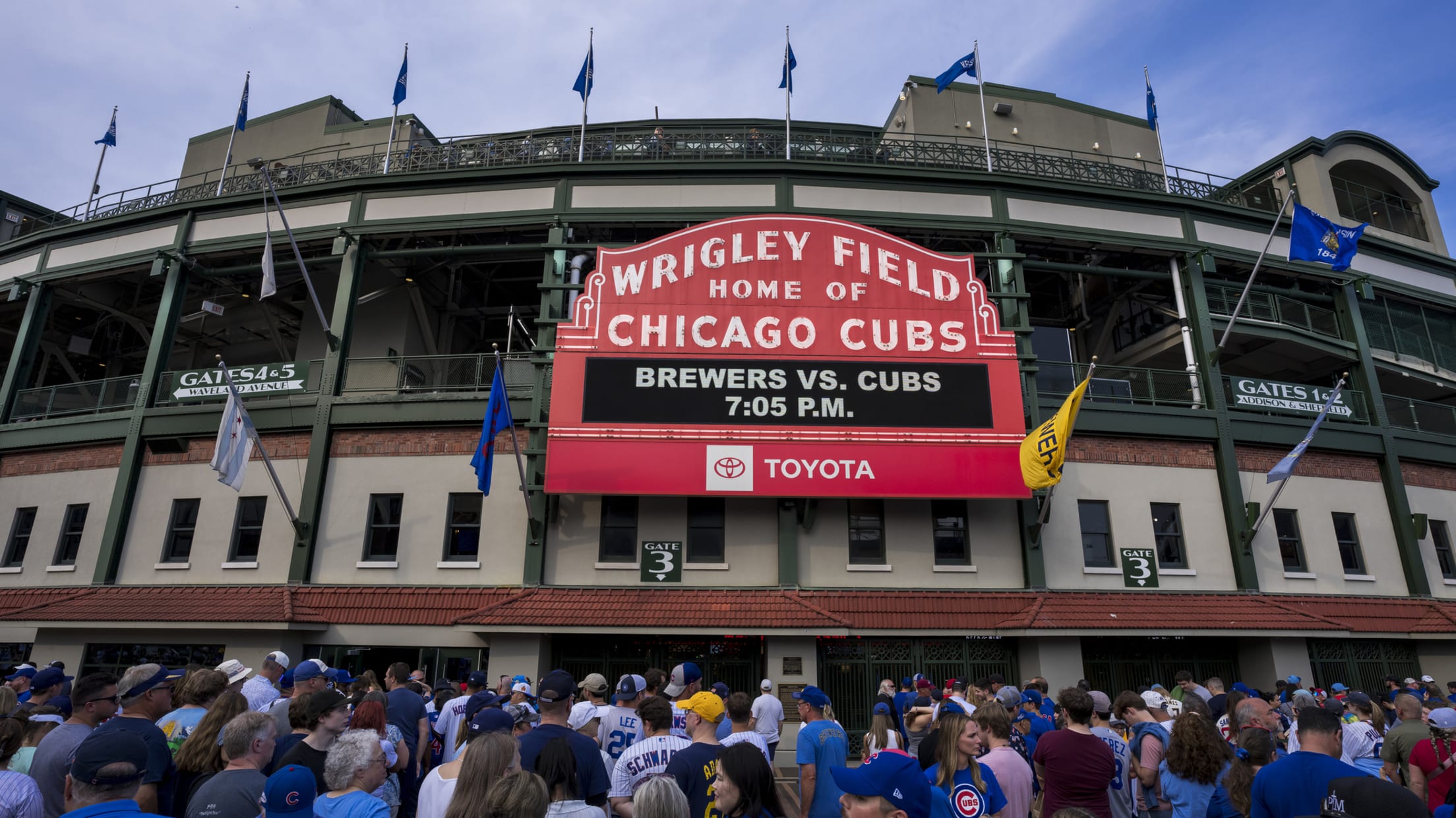
Wrigley Field has undergone a number of facelifts over the decades. Notably, lights were installed in 1988, making the Cubs the last Major League team to host night games. Afternoon games remain a part of the team’s traditions, setting a 1:20 p.m. CT time for nearly all Friday games. Video boards were added in left-center and right field as part of sweeping renovations that took place across 2014-19 as part of the 1060 Project under the Ricketts family ownership.
Wrigley Field has played host to three All-Star Games (1947, 1962 and 1990) and was also the home of the NFL’s Chicago Bears from 1921-70. The ballpark has hosted other sports, as well as concerts, offering a classic backdrop for a variety of events. The 2016 Cubs hosted World Series games at Wrigley Field for the first time since 1945, and brought home the team’s first championship in 108 years.
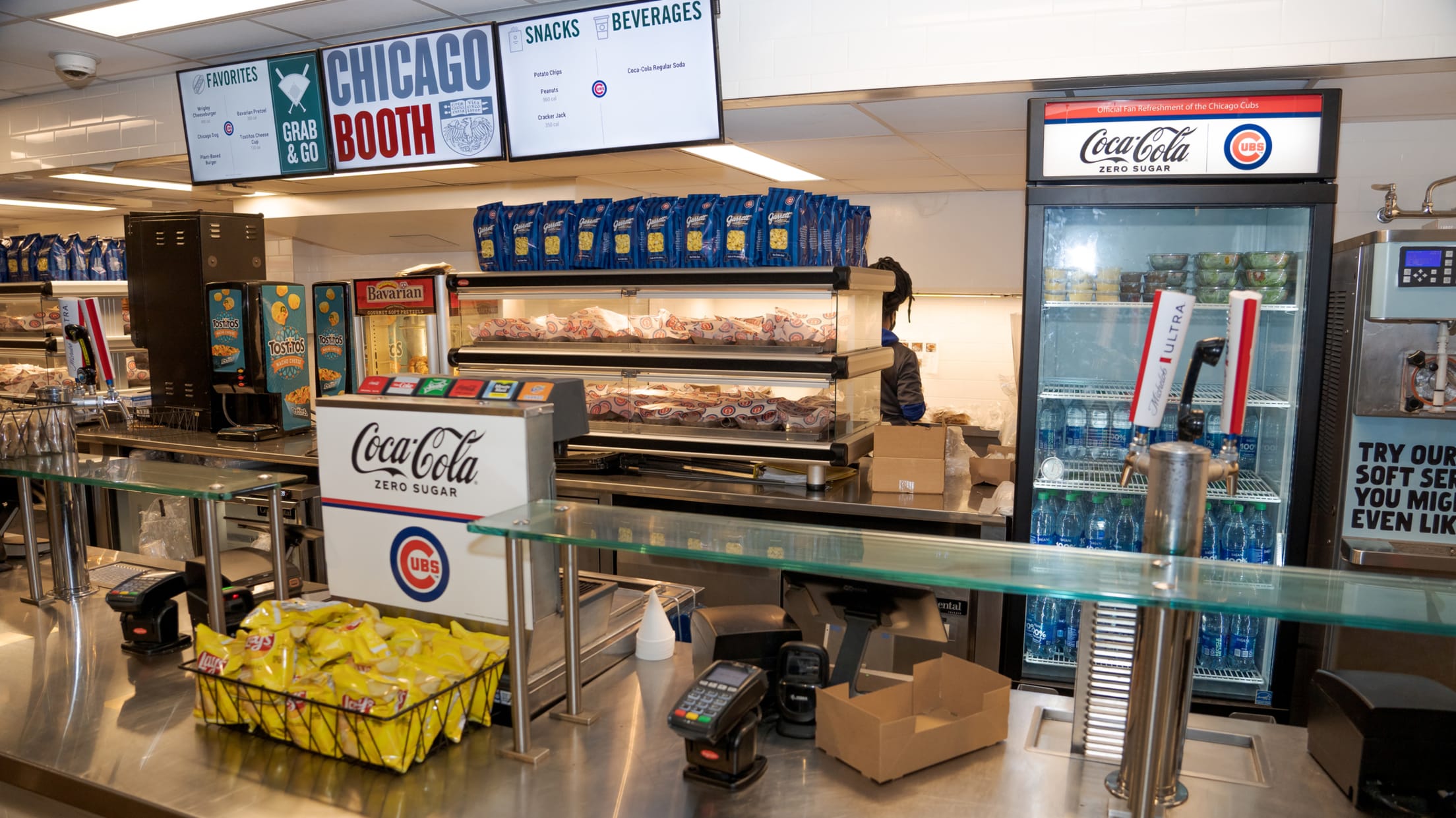
Concessions
The Friendly Confines features numerous places to find food and beverages. Obviously, the staples of pizza, hot dogs, peanuts, pretzels, soft drinks and beer are well covered. Some favorites to check out include a burger from Small Cheval in the Upper Bleachers, loaded Greek fries from the Addison Street Grill and you can’t go wrong with a Cubs helmet filled to the brim with nachos.
Local attractions
A city of 77 neighborhoods -- as celebrated by the Cubs’ recent City Connect uniforms -- there is no shortage of things to see and do in the Windy City. Some of the top attractions include the Field Museum, the Griffin Museum of Science and Industry, Shedd Aquarium, Adler Planetarium or the Art Institute of Chicago. Head up to the observatory level in the Willis Tower, enjoy a stroll along the Riverwalk or check out the miles of parks and trails along the Lake Michigan Shoreline. Get some shopping done along the Magnificent Mile (Michigan Ave.) or take in Chicago’s famous downtown with an architecture boat tour on the Chicago River.
Mascot
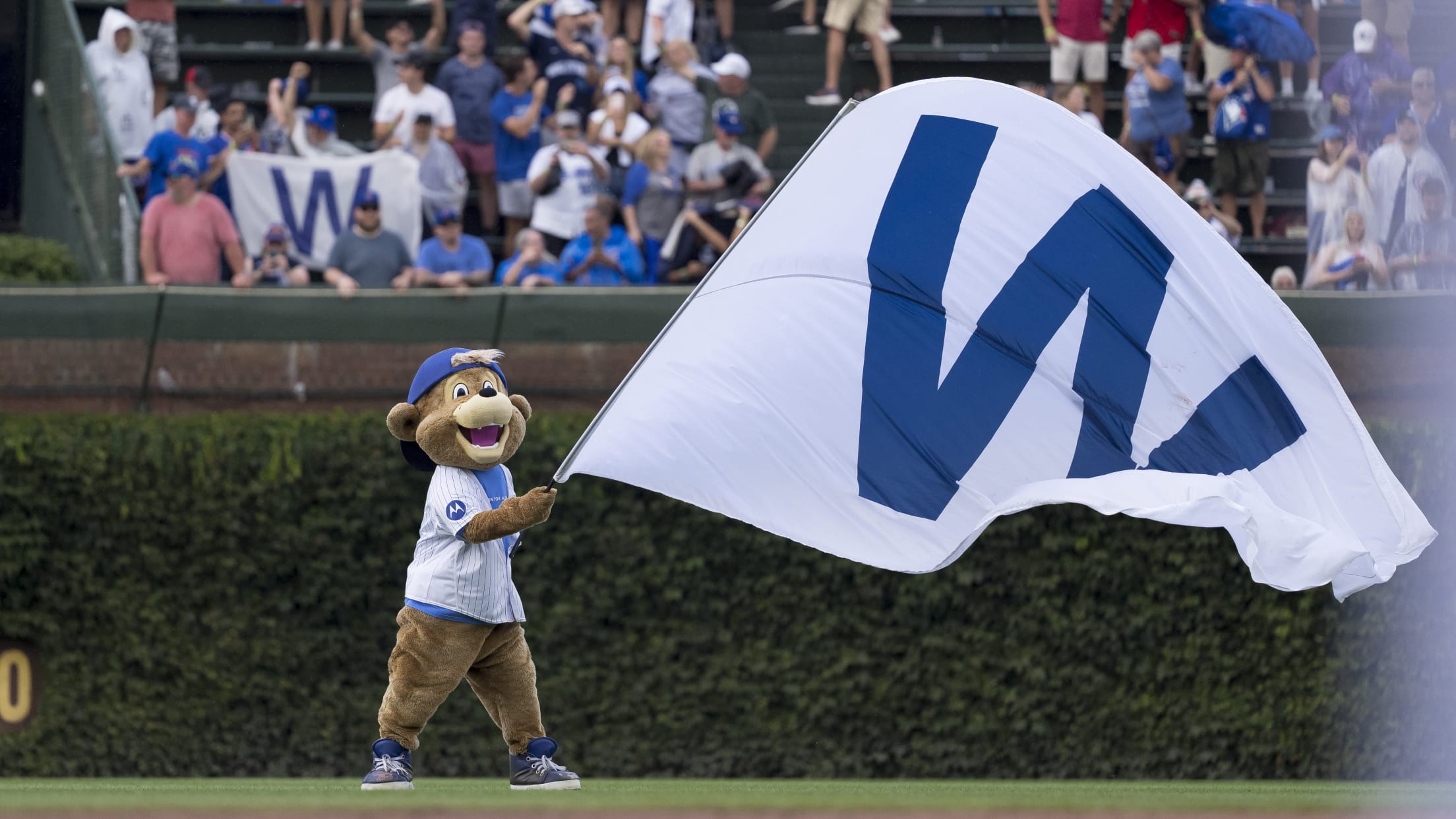
The Cubs introduced the first official mascot in team history, Clark the Cub, on Jan. 13, 2014. Clark dons a Cubs jersey and typically has a backwards cap, though his attire changes based on events or themes.
Food and Drink
If you’re in Chicago, you are going to eat well and chances are you’re looking for some of the city’s famous stuffed, deep dish or pan pizza. Lou Malnati’s and Giordano’s are famous pizza joints that can be found throughout the city, but don’t sleep on Pequod’s or Pizano’s, either. You don’t fold these slices. You’ll need a fork and a knife.
Portillo’s is a popular chain for Chicago’s famous Italian beef, and if you’re a fan of the show “The Bear,” check out Mr. Beef. Au Cheval offers a great burger and Stan’s Donuts has you covered for some breakfast sweets. Get some Jeni’s Splendid Ice Creams for dessert, and head over to Goose Island for a round (among the many breweries around town). If you want to stick to a Cubs-themed trip, Harry Caray’s steakhouse might be for you.
One thing is for sure, Chicago eateries are a great source of passion and debate among Chicagoans. Fans and visitors can stick to popular “touristy” spots or find some local gems. Don’t be shy about asking locals for recommendations while in town. What is certain is you’ll be full by the time you depart the City of Broad Shoulders.